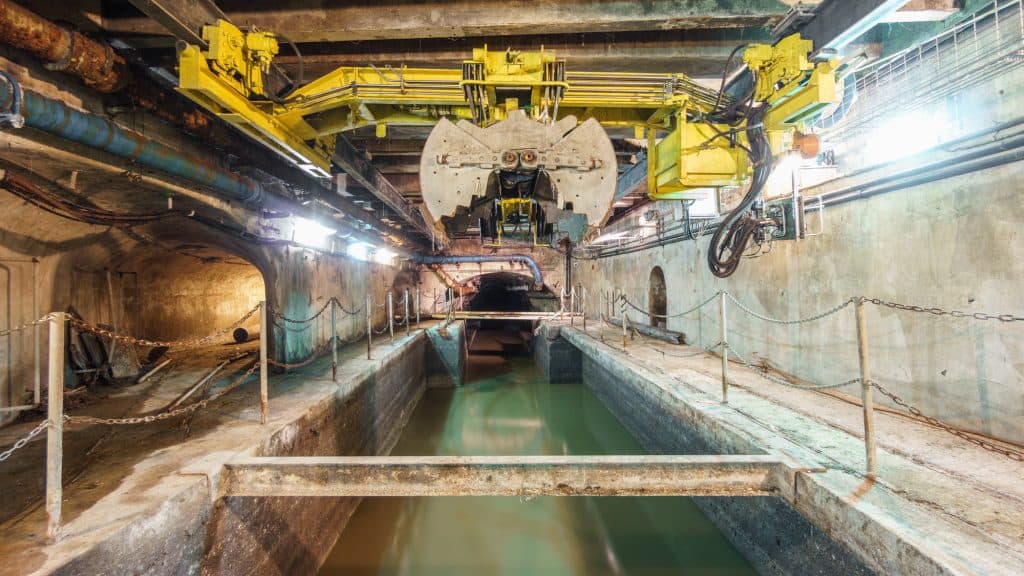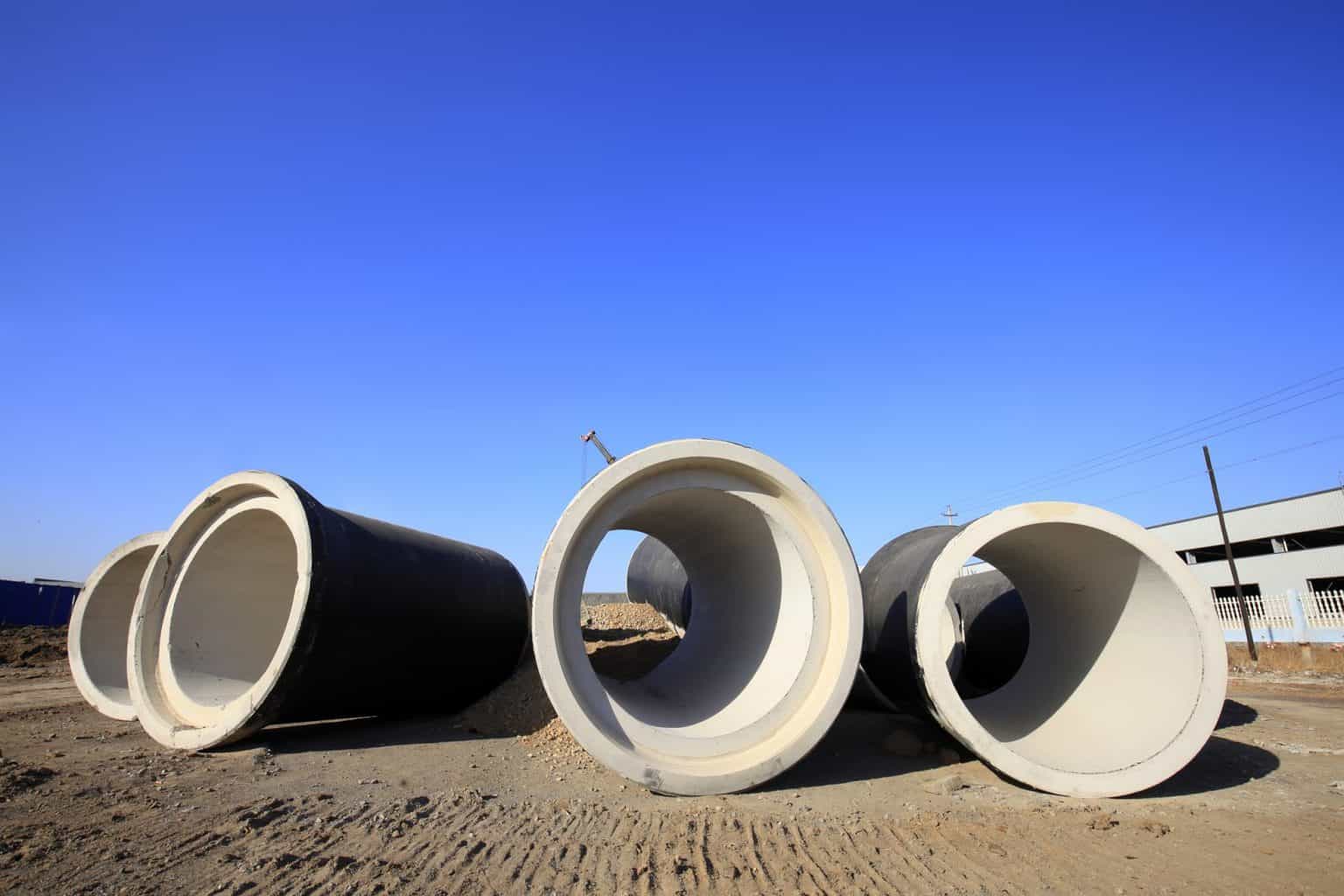We’ve all read the adventure novels or watched the scenes on television where people are escaping or being chased through a big city sewer system. There’s often a long pursuit down winding sewage lines, but are sewers like this in reality?
Most sewage lines aren’t big enough to walk in. The majority of sewage lines, even in big cities, are 2 to 4 ft (60.96 to 121.92 cm) wide. However, older sewage systems, built before the introduction of industrial tubing, may be large enough to walk in.
In this article, you’ll learn how different types of sewers vary in size, whether or not it’s safe to explore them, and the history of sewage lines.
How Big Is the Average Sewage Line?
On average, the sewage line size is between 4 and 6 inches (10.16–15.24 cm) wide, while more significant parts can reach 4 to 8 feet (121.92–243.84 cm) wide. The size of lines may vary depending on municipal regulations.
Typically the size of the piping involved in wastewater management depends on the application it’s used for. For example, storm drains require different piping than household plumbing.
Storm Drains
According to Patrick Carlson, the former superintendent of Carlson Plumbing, older storm drain sewer systems are the type people explore in movies. Before advancements in building technology, storm drains were made by hand using bricks. Such structures are the ones typically filmed in movies.
Most modern storm drains don’t lead to walkable tunnels. Instead, they connect to a drainage pipe that’s size is determined based on the annual rainfall of an area. The tube size will range between 2 and 8 inches (5.08 to 20.32 cm) in diameter. If rain is heavy, the diameter will be high, and if rainfall is low, the diameter will be low.
There may be larger pipes leading rainfall from storm drains to run-off locations in cities with a centralized water management system. These pipes are more significant, sometimes reaching between 4 and 8 feet (121.92 to 243.84 cm) in diameter.
Household Sewage Lines
Household sewage lines tend to be smaller than the sewage lines used to deal with storm run-off. The typical piping inside a home or building is between 4 and 6 inches (10.16 to 15.24 cm) wide.
Sewage pipes typically lead into a septic tank if the house isn’t on a centralized wastewater sewage system. If the home connects to a centralized sewage system, it may shuttle waste from smaller pipes to 2 to 4 foot (60.96 to 121.92 cm) wide tubes, leading to a treatment plant.
Is It Safe To Explore a Sewer?
It’s not safe to explore a sewer without a licensed tour guide. The majority of sewers contain a wide array of noxious gas that can be deadly to humans. In addition, sewers are pitch black, meaning the risk of injury from a fall or accident is very high.
The people who work in sewers bring lighting, masks, and protective equipment to protect them from hazardous waste. Without the proper equipment, entering a sewer can be detrimental to your health.
This isn’t to say, however, that there are no sewers worth exploring. It’s just important to avoid the ones that are actively being filled with sewage. There are many tours around the world of historical wastewater systems, the best part; they aren’t life-threatening.

You Can Take a Tour Through Sewers
Yes, there is such a thing as a sewer tour. So before you go diving into your local storm drain, consider these options recommended by the Smithsonian for your next vacation with the spouse. Below are some sewer tours you can consider:
- The Sewers of Paris, France. Though Paris is known for many things, including cuisine, fashion, and the Eiffel tower, the city also boasts one of the world’s largest underground networks of tourable sewers.
- The Roman Sewers of Vienna, Austria. Built by the Romans sometime near the first century AD, the ancient sewage system now offers tours based on the 1949 film The Third Man, which was filmed there.
- 18th Century Sewers of Sydney Australia. Here at this tour in the land down under, you can go further down, touring the city’s unique stormwater drainage system. Constructed in the 18th century, the government has been using this sewer system until this day.
- Rome, Italy. Home to one of the earliest sewage systems known to man, visitors can tour the Cloaca Maxima. Originally constructed sometime near the 6th century B.C.E.
- New York, New York. New York City subways are often shown in crime movies as a cascading network perfect for a chase scene. Though it won’t be how you imagined it in the movies on this tour, you’ll get a first-hand view of how the city that never sleeps deals with all it eats!
What Is the Earliest Recorded Sewage System?
If there’s one thing that most people take for granted, it’s the fact that when our toilet flushes, we don’t have to think about where our waste is going. Though, this wasn’t always the case in human history.
The earliest recorded sewage system can be traced back to Mesopotamia in 4,000 B.C.E. Mesopotamians created clay sewer pipes and brick latrines to collect and move waste products.
Further examples of early sewage systems can also be seen in ancient Persia and Egypt. History’s first water cooling system was built in ancient Persia, utilizing reservoirs and underground channels to cool and move water. In ancient Egypt, history’s first copper pipes were used to move wastewater.
History’s first examples of complex sewer systems emerge in ancient Greece and Ancient Rome. In the 18th century B.C.E., the Greeks created the first flush toilets and sewage canals flushed out with clean water. Furthermore, the Romans, with the Cloaca Maxima construction, built the first complex public sanitation system that moved public waste into the River Tiber.
During the Dark Ages in Europe, there was a lack of innovation in sewage management, with only some places implementing sewage canals and waste removal passageways. It wasn’t until the enlightenment in the 17th century that more complex covered sewer systems began emerging.
Later, Europeans even began collecting waste in sewage systems and used it to create rich soil that was high in nitrates and potassium nitrate. These ingredients were crucial to the production of black gunpowder.
Much like everything we interact with in life today, the course of sewage systems was altered drastically during the industrial revolution. Population explosions in the 19th and 20th centuries ushered in the increased spreading of disease. Europeans created complex sewage systems to manage the spread of waste, utilizing water treatment facilities, aqueducts, and reservoirs.
Final Thoughts
Sewers have a rich history and are arguably one of the most important inventions that humanity has ever created. Without them, Earth’s exploding population would be subject to more frequent outbreaks of disease and bacteria.
Though it may be tempting to explore a sewer, it’s essential to do so through a legitimate tour. Sewers can be a perilous and potentially life-threatening environment to humans.
Though you won’t find the thriving crime communities in sewers seen in the movies, you’ll discover the fascinating story of how society manages its waste and keeps the world that we live in inhabitable.
Sources
- Express Wastewater Solutions: History of Sewage Treatment
- The Smithsonian Magazine: Urine for a Treat with Tours of These Five Sewer Systems
- Wisconsin Department of Health Services: Sewer Gas
- Quora: What is the average diameter of medium sized cities central sewage pipes?
- Ehow: What Size PVC Pipe for Sewer Drains?
- TV Tropes: Absurdly Spacious Sewer

